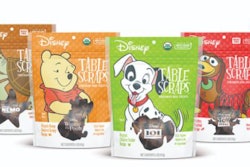
Pet food sales and new customer acquisition have remained strong for online retailer Chewy in 2021, even as pandemic-related movement restrictions relax in the United States. Chewy’s net sales of pet foods, treats and other products increased 31.7% year-over-year in the first quarter of 2021, ended May 2, to reach US$2.14 billion. The online pet product retailer had net income of US$38.7 million. Net sales per active customer (NSPAC) increased by US$31, or 8.7%, year-over-year to US$388. Out-of-stock problems proved persistent throughout the quarter and reduced first quarter net sales for Chewy by an estimated US$40 million.
“These industrywide headwinds are supply-driven and we expect them to abate in the second half of the year as additional production capacity comes online,” Chewy executives wrote in a letter to shareholders.
The number of active customers on Chewy increased by 4.7 million in the first quarter year-over-year. That represents a 31% increase to reach 19.8 million active customers in total. New customer acquisition remains higher than before the pandemic, although lower than during the U.S. peak in 2020.
Chewy online pet food customer base growing
During the past two years, Chewy’s customer base grew 75 percent, adding 8.4 million people and their respective pets. That rapid growth means that the average time a customer has been buying from Chewy now is less than two years.
Those new customers seem to be sticking with Chewy, as retention rates remain steady. Keeping the ongoing influx of new customers could set the stage for later growth.
“In other words, our average active customer is still squarely on the left-hand side of their lifetime spending curve with us,” Chewy executives wrote. “For context, our customers historically spend over $400 with us in their second year, compared to approximately $700 in their fifth year and almost $900 in their ninth year. As such, we believe that we still have significant future share of wallet gains left to realize from a substantial component of our customer base.”

















